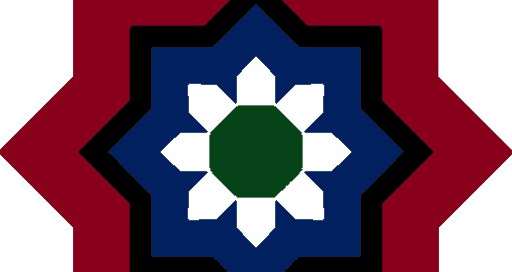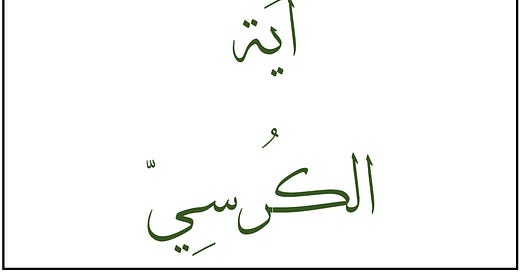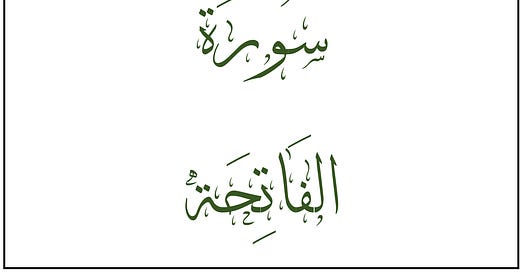As we begin our study of the Structure of the Quran, there will be recurring terms that we should be aware of so that we can understand the words being used in this newsletter.
For example there may be times where the word, “Allah” is used in an example to demonstrate a concept. In those cases, we will refer to the word, “Allah” as “لَفظُ الجَلَالَة (lafẓul jalaalah)” which means, “the word of majesty.”
This is so we have manners with Allah ﷻ and instead of saying, “Allah is a detail of the sentence,” we will say “lafẓul jalaalah is a detail of the sentence.”
After the name Allah, you may see the following symbol: ﷻ. Written out it reads, “جَلَّ جَلَالُهُ (jalla jalāluhu)” which roughly translates to, “Exalted is His majesty”.
After the name of the Prophet, you may see the following symbol: ﷺ. Written out it reads, “صَلَّ اللهُ عَلَيهِ وَسَلَّمَ (ṣalla Allahu ‘alāyhi wa sallam)” which roughly translates to, “May Allah bless, praise and protect him”.
We will also be using the words آيَة (āyah) and its plural, آيَات (āyāt) very often. These terms are usually translated as “verse,” but that definition leaves a lot of the meaning out. More accurately, an āyah is a sign that points you in the direction of something. In the context of the Quran, every āyah is a miraculous sign pointing back to Allah ﷻ. For this reason, we’ll keep using the word āyah instead of translating it as “verse”.
Similarly, we’ll come across سُورَة (sūrah) and its plural, سُوَر (suwar), quite often. This word is sometimes translated as “chapter”, but this isn’t a good translation. Here is a more comprehensive breakdown of the word:
Allah ﷻ says in the Quran that He didn’t just reveal āyāt, rather, He actually says He revealed suwar too. For example, Surah al-Nur actually calls itself a sūrah (24:1)
سُورَةٌ أَنزَلْنَاهَا وَفَرَضْنَاهَا وَأَنزَلْنَا فِيهَا آيَاتٍ بَيِّنَاتٍ لَّعَلَّكُمْ تَذَكَّرُونَ
A sūrah; We sent it down and made it obligatory and we revealed clear āyāt in it so that you may remember.
Coming from the same root letters, you get the following words which help us understand its deeper meaning:
سَوْرَ (sawr) – When you have a wine or a liquor that’s extremely heavy or strong, like you’ll get intoxicated just by a few sips. The intensity that reaches/affects the head is what this word means.
سَارَ يَسُورُ (sāra yasūru) – To climb up to a very high place. This word was used to describe the tall walls that were insurmountable and would protect a city.
تَسَوَّرَ (tasawwara) – To scale
سَوْرَة (sawrah) – A high status, a level of a building, borders of something
In the Quran, a sūrah can remind you of another sūrah or of another piece of a sūrah.
“Sūrah” is used to describe something that rises from the bottom to the top. Like the drink that intoxicates you from the bottom to the top, the wall that’s insurmountable, etc.
Interestingly, the Quran actually uses the word sūrah as something that’s dropped down, instead of something being raised from the bottom to the top. That means that it’s impossible to surmount because you can’t see the top; it’s endless. And if you can’t see the top then its not prone to attack.
Taking all of the above into account, defining “sūrah” as a “chapter” is a far ways from its proper definition. For this reason, we’ll stick to calling it a sūrah throughout our studies.
Any other terms we missed? Please message us and we’ll add it to the list!











Mashallah, just Marvelous
Love this site. How may I contribute my ring representations? I have a few not included in your site